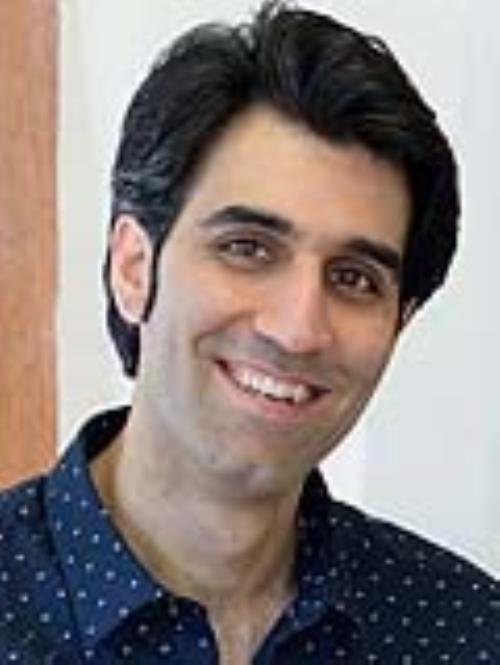
|
Masoud Nickaeen, PhDAssistant Professor, Department of Cell BiologyCenter for Cell Analysis and Modeling
|
|||||||||
My research is at the interface of mathematical modeling and computational tools development for the study of cellular processes that rely on actin cytoskeleton remodeling and dynamics. I have several ongoing collaborations with the labs of Dr. Slepchenko and Dr. Loew at CCAM at UConn Health, and external experimental labs in chemical/biomedical engineering, and in cellular and developmental biology.
| Degree | Institution | Major |
|---|---|---|
| BSc | Persian Gulf University | Mechanical Engineering - Thermofluids |
| MSc | K.N. Toosi University of Technology | Mechanical Engineering - Energy Conversion |
| ME | Rutgers, The State University of New Jersey | Mechanical Engineering - Fluid Mechanics |
| PhD | TU Dortmund | Applied Mathematics |
Post-Graduate Training
| Training | Institution | Specialty |
|---|---|---|
| Postdoctoral | UConn Health | Postdoctoral Research Fellow, Modeling Cell Mechanics and Migration |
Awards
| Name of Award/Honor | Awarding Organization |
|---|---|
| School of Engineering Fellowship, Department of Mechanical and Aerospace Engineering | Rutgers, The State University of New Jersey |
| Scholarship, Graduate School of Energy Efficient Production and Logistics | Faculty of Mechanical Engineering, TU Dortmund |
| Name & Description | Category | Role | Type | Scope | Start Year | End Year |
|---|---|---|---|---|---|---|
| American Association for the Advancement of Science, AAAS/Science Program for Excellence in Science | Professional/Scientific Organization | Sponsored Member | National | 2016 | 2019 |
I am an applied mathematician with training in computational biology and biophysics. I study the role of biomechanics, and its regulation by biochemical reactions, in cell function. I am interested in understanding cellular processes that lead to or rely on the motion and deformation of the cells, their organelles or subcellular structures. Cell shape maintenance and changes, such as during cell division, endocytosis and migration, and tissue morphogenesis, are fundamental to development, homeostasis, and disease. These shape changes are dictated by actin cytoskeletal dynamics coupled to the plasma membrane, and controlled by myriad, sometimes interconnecting, regulatory pathways. In addition to this complexity, the inherently transient, and, in most cases, the diffraction limited nature of these processes make experiments challenging to perform and interpret. Mathematical modeling is therefore an indispensable complementary approach. Biophysical models, specifically, allow us to integrate empirical measurements of protein abundances and dynamics, kinetic parameters, and physical parameters describing mechanical properties of the cells and their force-bearing components. These models have predictive potential, and are used in dialogue with biological experimentation to interrogate cell shape and cytoskeletal organization. Models are also used as surrogates for experimentation, in cases where reliable measurements are lacking, to determine biophysical parameters of the cell.
Numerical simulation of these models often requires sophisticated computational tools and lead to computationally complex/expensive simulations. I design/reuse numerical algorithms and software tools to run simulations more efficiently and with sufficient accuracy. Importantly, I am committed to generate comprehensive algorithms for modeling complex cell dynamics, and to make them freely accessible to a broader biomedical community, by integrating these new tools to the Virtual Cell (vcell.org) software platform.
Over the past 6 years, I have collaborated with several experimental/theoretical labs to build systems-level mechanistic models of several actin-based cellular processes. Current/past projects include:
1- Simulation of the mechanics of actin assembly during clathrin-mediated endocytosis in yeast
2- Modeling actomyosin cortex dynamics during animal cell cytokinesis
3- Design of computational algorithms for modeling cell shape changes, and enhancing the VCell (vcell.org) dyanmic spatial modeling capabilities
4- Developing models of actin-based motility and self-polarization in epithelial fish keratocyte cells
For over a decade, from 2007-2018, I have been involved in algorithm and methods development for modeling fluid flow and heat transfer phenomena for engineering applications. In doing this line of research, I have used a plethora of open-source and commercial packages, numerical methods, model building libraries, solvers, and post-processing tools for visualization and analysis of the results. I have also developed expertise in computer programming and scripting (C, C++, Fortran 90, Matlab, Python, Bash, Perl), software development (prototyping, testing, debugging, version control software), and worked with high performance computing clusters for both parallel processing (distributed and shared memory) and job submission/maintenance, as well as with high-speed and large data storage technologies.
Journal Articles
-
In vitro experiments and kinetic models of Arabidopsis pollen hydration mechanics show that MSL8 is not a simple tension-gated osmoregulator.
Current biology : CB 2022 Jul;32(13):2921-2934.e3
-
A model of actin-driven endocytosis explains differences of endocytic motility in budding and fission yeast.
Molecular Biology of the Cell 2022 Mar;mbcE21070362
-
Actin assembly produces sufficient forces for endocytosis in yeast.
Molecular biology of the cell 2019 Jul;30(16):2014-2024
-
A comparative study of mixed least-squares FEMs for the incompressible Navier-Stokes equations
IJCSE 2018 Sep;17(1):80-97
-
A free-boundary model of a motile cell explains turning behavior.
PLoS computational biology 2017 Nov;13(11):e1005862
-
Transport, resealing, and re-poration dynamics of two-pulse electroporation-mediated molecular delivery
Biochimica et Biophysica Acta (BBA) - Biomembranes 2015 Aug;1848(8):1706-1714
-
Newton Multigrid Least-squares FEM for the V-V-P formulation of the Navier-Stokes equations
Journal of Computational Physics 2014 Jan;256:416-427
Monographs
Reviews
-
Unite to divide - how models and biological experimentation have come together to reveal mechanisms of cytokinesis.
Journal of cell science 2018 Dec;131(24):
| Title or Abstract | Type | Sponsor/Event | Date/Year | Location |
|---|---|---|---|---|
| Actin assembly produces sufficient forces for endocytosis in yeast, Cellular Dynamics & Models meeting | Poster | 2019 | Cold Spring Harbor Laboratory, NY | |
| Modeling mechanochemical processes of motile cells | Talk | Invited colloquium Talk | 2018 | Department of Mathematics, Faculty of Science, Shiraz University, Iran |
